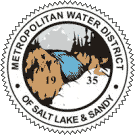
Metropolitan Water District of
Salt Lake & Sandy
 |
Metropolitan Water District of Salt Lake & Sandy |
|
|
||
|
Chemicals Used In Water Treatment |
||
|
Potassium Permanganate (KMnO4) |
 |
|
|
Potassium permanganate is used for taste and odor control. When you are near raw water, it may have a earthy or fishy odor to it. This is caused by large organic molecules. The potassium permanganate destroys these large molecules, and also |
||
|
their odors. |
Potassium Permanganate |
It is then mixed with water |
|
is received at the LCWTP |
to be fed into the treatment |
|
|
as a dry chemical. |
process. |
|
|
|
|
|
Lime (CaOH) |
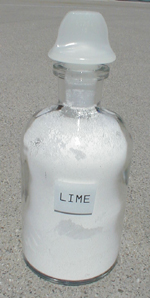 |
|
Lime is added to buffer the water so that it is not as corrosive. When water is corrosive, it can leach out materials from the surrounding pipes. Lime is also added to increase the efficiency of the other chemicals. |
|
|
|
|
|
Aluminum Sulfate (AlSO4) |
|
|
Aluminum Sulfate (also known as Alum) is used as a primary coagulant. The positively charged aluminum ion attracts many viruses, bacteria, and dirt, which are negatively charged. Floc is formed from all of these particles. |
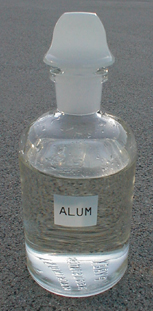 |
|
Ferric Chloride (FECl2) |
|
|
Ferric Chloride can be used interchangeably with Aluminum Sulfate since both chemicals serve the same function. |
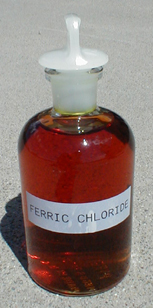 |
|
|
|
|
Polymer (Cat-Floc TL) |
|
|
Polymer is used to aid in the formation of floc. Unlike the alum, polymers form floc by branching out and trapping various particles. |
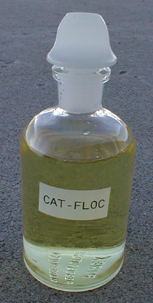 |
|
|
|
|
Polymer (POL-EZ 675) |
|
|
POL-EX is an anionic (negatively charged) polymer. It is added to water late in the treatment process and forms a layer on the top of the water in the filter. It attracts the particulates going through the filter and keeps them in the filter rather than letting them pass through. This layer does not pass through the filter media and is removed from the filter media during a filter backwash. |
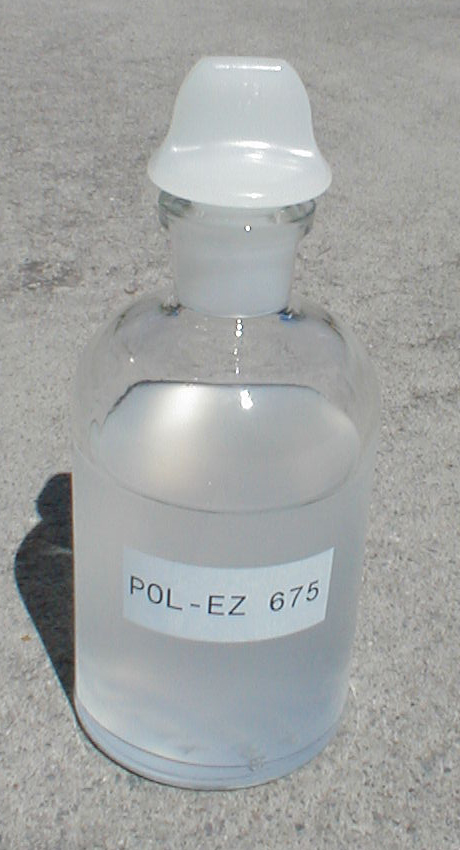 |
|
|
|
|
Fluorosilicic Acid (F6H2Si) |
|
|
Fluorosilicic Acid, more commonly known as fluoride, was approved by popular vote and is now required by Salt Lake Valley Health Department Regulation #33. The Metropolitan Water District of Salt Lake & Sandy began adding fluoride as required on October 1, 2003. Your tap water now has 1.0 mg/l fluoride. |
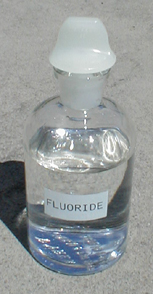 |
|
|
|
|
Sodium Hydroxide (NaOH) |
|
|
A strong caustic chemical used in treatment processes to neutralize acidity, increase alkalinity, or to raise the pH value. It is also know as caustic soda, sodium hydrate, lye, or white caustic. |
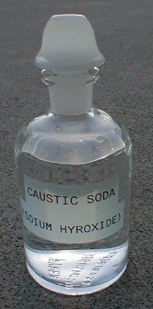 |
|
Chlorine (Cl2) |
|
|
Chlorine is used as both a primary and residual disinfectant. As a primary disinfectant, it inactivates bacteria that could be harmful to the public. A s a residual disinfectant, the presence of chlorine in the distribution system ensures that no bacteria will grow in our drinking water. |
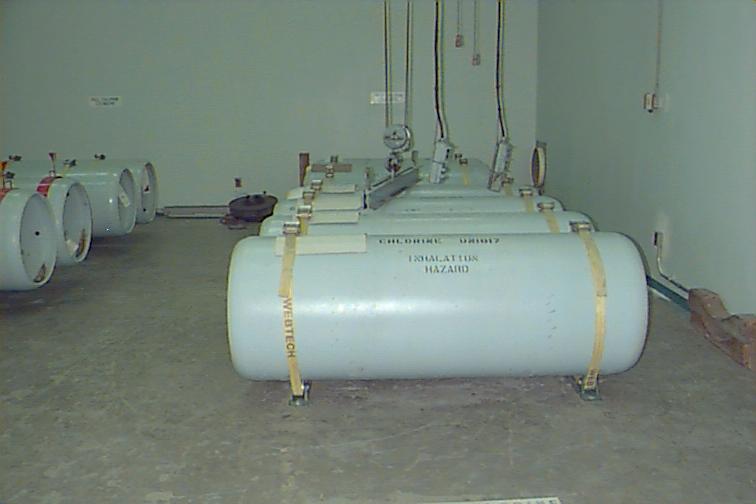 |
|
|
|
| Back to Water Treatment Information Back to Virtual Tour | |